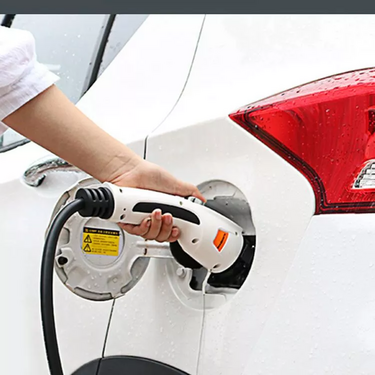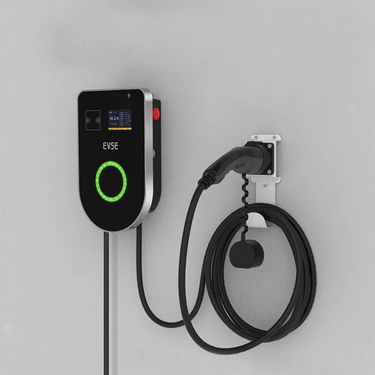What is a Garage charging station? Ultimate Guide
Choose the right electric car charging station for your home or work
It is very important to choose a suitable garage charging station for your car. There are several aspects to this.

The electric car charger may have a built-in cable or socket. The built-in cable can be convenient at home, but in this case the cable cannot disconnect or use elsewhere. Fortunately, a built-in cable charging station at home is only minimally more expensive than a socket version.
Electric car built-in cable or socket
Tip: Most street electric car chargers do not currently have a built-in charging cable, you should always bring a portable version with you in your car. The performance of the charging cable must match to the performance of the garage charging station and the capacity of the car to charge. Choose a cable that can transmit maximum power.
Charger types – which one is for what
There are huge differences between charger and charger. It is most practical to categorize them by function. If you are traveling near or beyond the comfortable range of your car, you may need a travel charger along the highways and major roads on the go.
There are still few of them (in the middle of 2019) in Hungary, but hopefully their number will increase. In all cases, these so-call lightning chargers with a high power (at least 40 kW). They mostly have a direct current (DC) 44-50 kW CHAdeMO or CCS connector, but there are also some that have a 43 kW alternating current (DC) Type 2 connector.
Destination chargers has low-powers
Ideally, you should not spend more than 15-20 minutes on these chargers to get started, as you can charge an acceptable amount of energy into your car. Arriving at your garage charging station, the car is worth the so-called destination chargers when you are done, you can return to the next location with a fully charged battery. The destination chargers are low-power, mostly 22 kW AC chargers in Europe.
By clicking on the filter button on the map above, you can set it to display only chargers with a connector that matches your car type and only those that have the desired performance. You may want to use this when planning your trips.
Home charging benefits
This is the most important charger for the vast majority of electric cars. While we are at home, typically at night, the car is charging. These chargers are usually slow chargers that charge the car battery from 1 or 3 phases, 10 to 16 amps per phase. Thus, the car charges in 8-10 hours from a completely discharged state at garage charging station

Speed isn’t a problem with these chargers, as the car stops at night anyway, and most motorists don’t return home with a fully discharged battery, so charging doesn’t last long. These are exclusively AC chargers that connect to the car via a Type1 (eg Nissan LEAF, Kia Soul, Peugeot Ion) or Type2 (Mennekes) (eg Tesla Model S, VW eGolf, Renault Zoe) connectors and are typically 2.3-3.
Car battery and its capacity
One of the great benefits of electric driving is that it is not bound to hydrocarbons, so you don’t have to go to a gas station to charge your car. An electric car can charge almost anywhere where there is a (10-16 amp) outlet. Of course, there are huge differences between charger and charger, so it’s worth reviewing them.
They can deliver 6 kW (for three-phase chargers, this value is usually 11 kW). Garage charging station and charger time depends on the size of the car battery and the capacity of the inverter (AC to DC unit) installed in the car. For a 3.6 kW inverter, charging a Nissan LEAF with a 24 kWh battery with a 16A charger takes approx. 7-8 hours.
Factory charger take power from any outlet
Each electric car comes with a factory charger, which in the case of mid-range cars (eg Nissan LEAF, BMW i3, Renault Zoe, Kia Soul) can usually charge the car’s battery with 10 A. If we always carry this charger with us, the car can charge anywhere, from a simple outlet.
The disadvantage of using a factory charger is the inconvenience. The charger should package after each use, which is not always the best occupation in a suit or suit in the morning. It’s a good idea to keep this charger in your car, because it can take power from almost any outlet.
Nissan factory charger a more convenient version for home charging
The cable of the fixed wall charger is also permanently connect on garage charging station, so all you have to do is remove the plug and plug it into the car. The operation takes a few seconds and isn’t even as complicated as refueling conventional cars. (This is also EVSE)
In general, all chargers with a power output of 3.6-40 kW above the home charger classifies as fast chargers (of course, these are also EVSEs). Of these, the 22 kW poles set up and the 11-22 kW poles installed by E-ON were widespread here in Hungary. Both can connect via a Type2 connector. In the absence of these, charging can also start and stopped via the phone using the keypad.
Street fast charger to charge the car as soon as possible
There is no cable on this garage charging station; it must always carry by the driver. As long as the cable is connected to the car, it cannot disconnect from the charger, but after disconnecting from the car, the charging cable can unplug freely. Therefore, it is very important that the cable also lock on the car side (automatically or manually).
With fast chargers, the speed at which a car charges depends primarily on the car’s inverter. It is useless for the charging column to provide 32A in 3 phases if the car can only absorb that much in 1 phase.
In addition, the most common electric cars with a 3.6 kW inverter will be able to use only half of the 32A. If it is important for the street fast chargers to charge the car as soon as possible at garage charging station, it is advisable to order it with a larger inverter. The inverter cannot replace afterwards in most cars.

